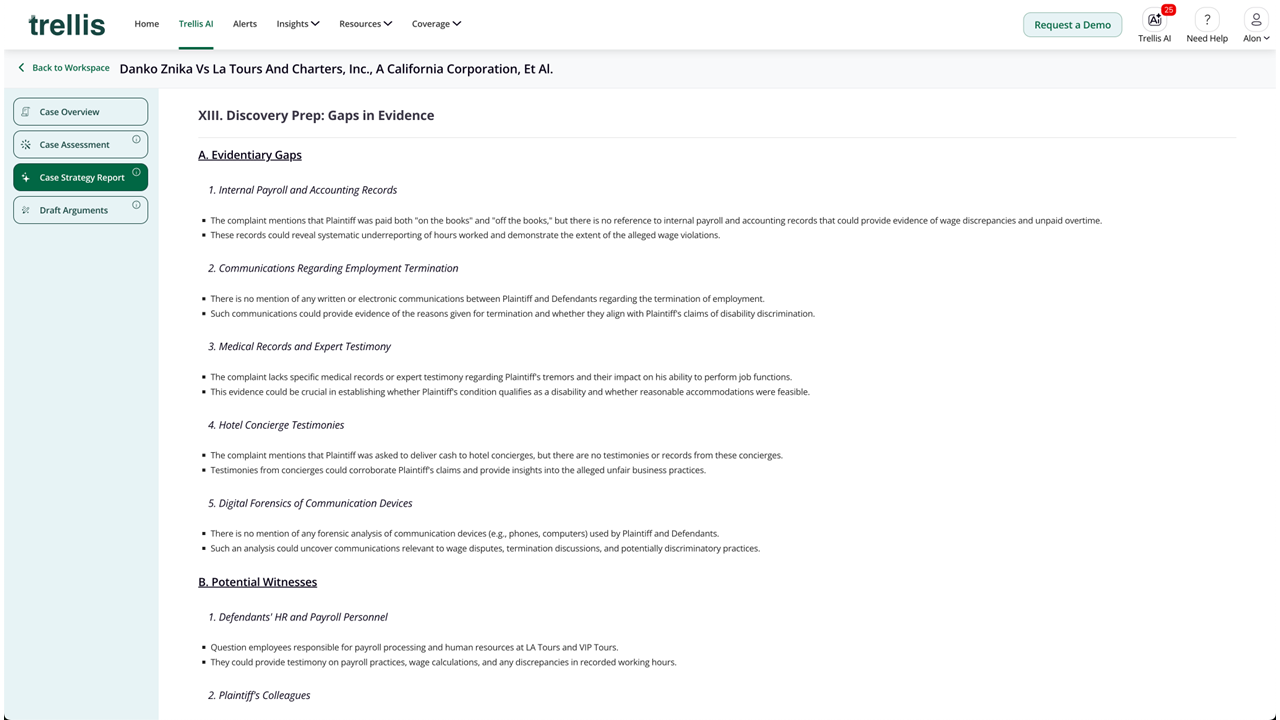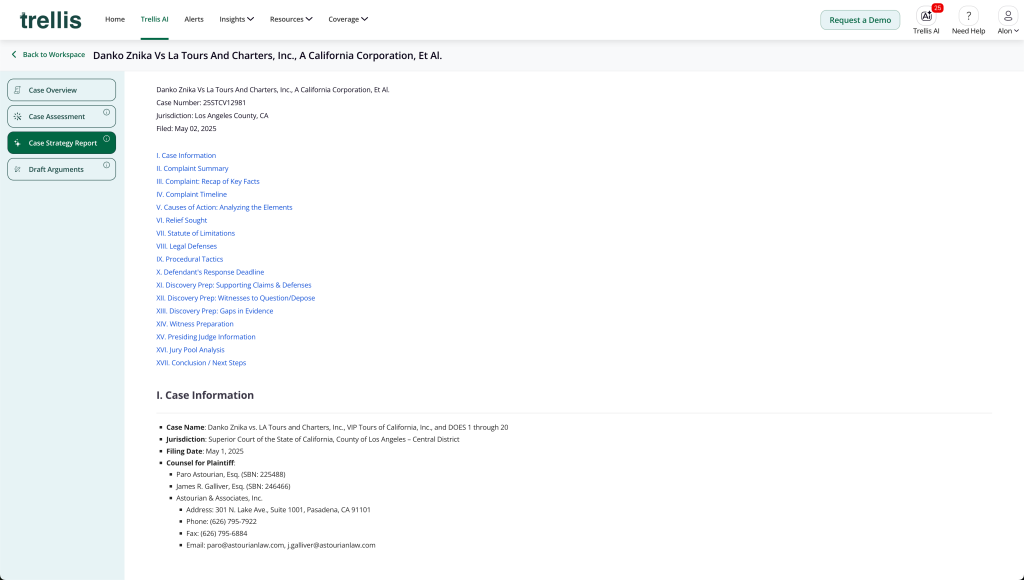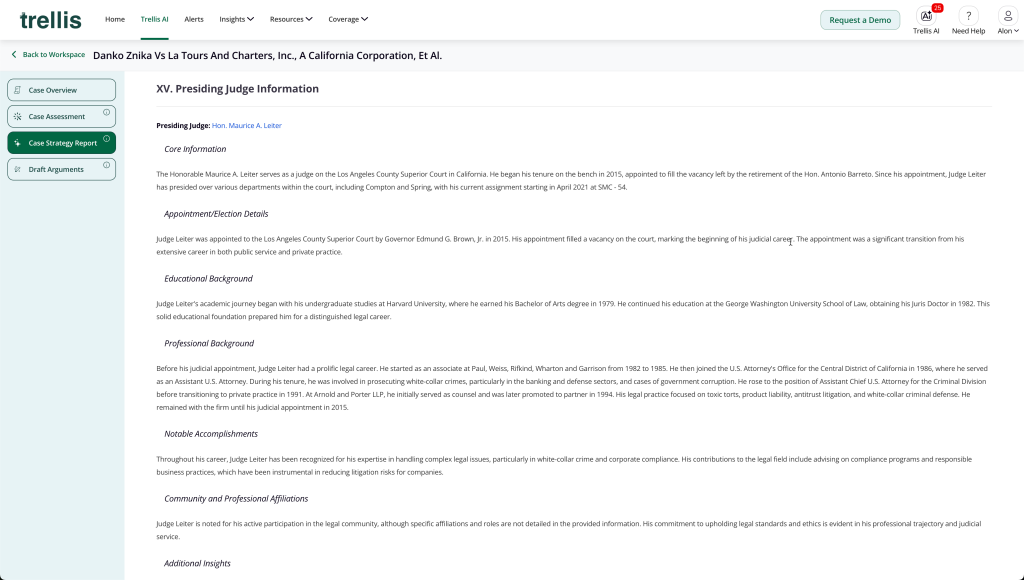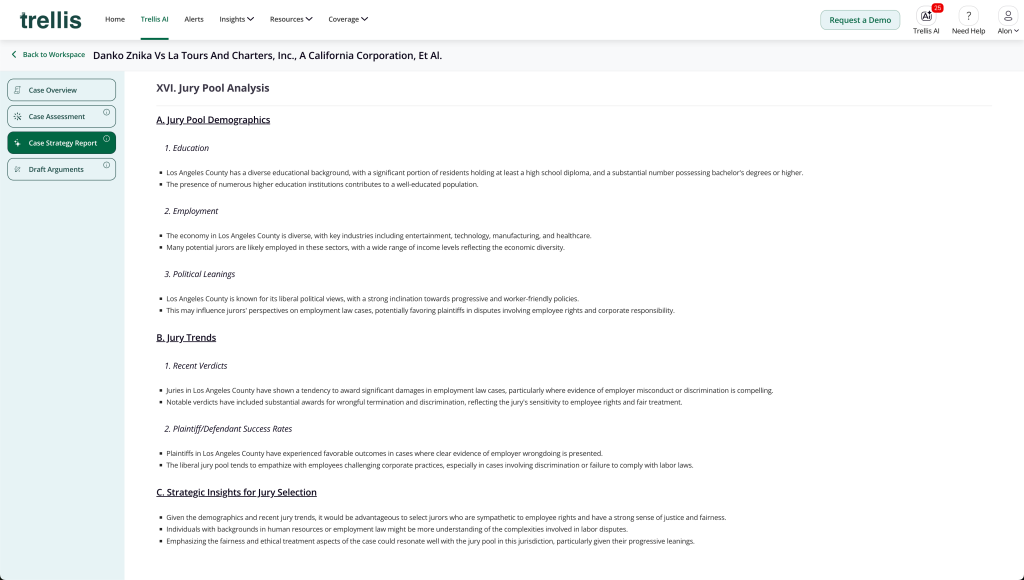In a first-of-its-kind partnership, Trellis, a legal technology company that provides state trial court data and insights, is partnering with the international labor and employment law firm Fisher Phillips to integrate its AI-generated case strategy reports directly into the daily case alerts received by the firm’s attorneys whenever their clients are named in a state court case.
While Fisher Phillips already had a relationship with another company to send these case alerts, the alerts provided only basic information, such as case numbers, jurisdictions, and maybe a brief summary of the complaint.
But through the partnership with Trellis, these alerts are enriched with AI-driven case insights drawn from Trellis’s collection of state court data that includes 2.5 billion records across 3,500 cases from 46 states.
“When our clients need us, speed and strategy matter,” said Evan Shenkman, chief knowledge and innovation officer at Fisher Phillips. “That’s why we partnered with Trellis to enhance our new case alert system with AI-generated Case Strategy Reports.
“These customized early case assessments — trained on millions of judicial filings — automatically land in our attorneys’ inboxes whenever their client is named as a defendant in a state court case. With instant, AI-powered insights, we gain a critical head start in protecting our clients’ interests.”
These Case Strategy Reports are based on the suite of generative AI features Trellis released last November (and which I discussed with Nicole Clark, the founder and CEO of Trellis, in an episode of the LawNext PR Podcast). But the integration with Fisher Phillips takes this concept a step further by embedding these AI-generated reports directly into the daily alerts attorneys receive. That detailed information can give them a critical head start on a case.
Among the topics the Case Strategy Report specifically covers:
- Case details and filing insights, including key parties, jurisdiction and procedural posture.
- Complaint timeline and statute of limitations, mapping out critical deadlines.
- Risk factors and recommended next steps, including potential defenses, procedural tactics and discovery.
- Judge intelligence and jury pool analysis, leveraging historical data on judicial tendencies.
- Discovery preparation roadmap, identifying key evidence gaps and next steps.
How the Integration Works
During a demonstration of the system, Alon Shwartz, cofounder and chief operating officer of Trellis, explained that the process begins when a case is filed against a Fisher Phillips client or potential client and the firm receives an alert through its service provider. While case alerts are “pretty much a commodity,” Shwartz said, “the value here is not just to know where a case was filed … it’s to know what to do with that information.”
Twice a day, all the case alerts Fisher Phillips receives are automatically forwarded to Trellis. These alerts, which come from a different vendor, are automatically processed by Trellis’ system. “We get them as a spreadsheet, basically, of their new alerts twice a day,” Shwartz said, although he added that the alerts can also be sent to Trellis via a BCC on email alerts or through other methods such as CSV files or FTP transfers.
To generate a complete Case Strategy Report, Trellis requires minimal information: primarily the case number, state, and county where the case was filed. With just these three data points, Trellis can leverage its database to produce comprehensive analysis without requiring firms to share sensitive client information or credentials.
Inside the Case Strategy Report
Shwartz said that the Case Strategy Report is designed to be a comprehensive resource for attorneys from “minute zero” of a case filing. During the demonstration, he showed me a sample report that contained multiple sections focused on providing strategic guidance. “The whole idea of this is to provide strategy for the attorney,” he said.
These reports include basic case information, causes of action, factual background about the case, a timeline, and a detailed breakdown of each cause of action. What sets the reports apart, however, is their strategic content: legal defenses broken down by cause of action, potential tactics, supporting claims and defenses, discovery preparation recommendations, witness identification, and gaps in evidence.
The reports also provide judge analytics if a judge is already assigned, and even jury pool analysis covering education, employment, political leanings, and historical trends that might affect trial strategy if the case proceeds that far.
A key to the effectiveness of these reports, Shwartz emphasized, is that they are generated based on not just the available information for the specific case, but also on information from other similar cases found in Trellis’s collection of 2.5 billion court records.
“We have the biggest database of state trial court case information in the country,” he said. “We’re looking for other similar cases based on cause of action and facts, and we’re providing you with this report based on that information.”
While Trellis automatically generates these reports for new cases, it can also do so for existing matters. Attorneys can request a strategy report for a case filed a year ago, for example, giving newly assigned lawyers a quick way to get up to speed.
In addition to the attorney-focused Case Strategy Reports, the system also generates “Case Assessments” designed for clients. These assessments cover similar ground but are formatted differently – using a more narrative style appropriate for non-attorney audiences like chief legal officers or company executives.
“It’s designed differently because the end user or the recipient is different,” Shwartz explained during the demo.
Nationwide Coverage, Easy to Onboard
Shwartz said that a key advantage of the Trellis system is its nationwide coverage of state courts, with federal courts to come, spanning 46 states and the District of Columbia, with approximately 3,500 courts covered.
It is also extremely easy for a firm to onboard with this service. “You don’t really need to involve your IT, you don’t really need to involve your security, you don’t provide us any [credential] information,” Shwartz said.
In fact, even as Trellis is announcing this partnership with Fisher Philips, it has already launched similar programs with other firms, although he declined to name them.
Beyond serving existing clients, Fisher Phillips and other firms using the tool can leverage it for business development, Shwartz said.
“The essence [of the report] is the ability to get to inform your client or your prospect and win new business, and that is what a lot of other law firms looking at this tool see, ‘This is amazing for my clients, this is as important for me to win new business.'”
Bottom Line
“Litigation strategy starts the moment a case is filed, and access to structured, AI-powered insights — built on a foundation of hundreds of millions of trial court cases – immediately upon notification gives attorneys a critical advantage,” said Nicole Clark, the CEO of Trellis.
When I first saw Trellis’s case strategy reports and other AI tools in November, I wrote then that I was impressed with the case report feature’s ability to get quite detailed in providing analysis of causes of action and defenses, facts and witnesses, timelines, tactics, discovery prep, and much more.
This integration with Fisher Philips’ daily alerts takes it a step further, providing that comprehensive analysis at the earliest stage of a case – when a complaint is first filed – and delivering it directly to the lawyers who need that analysis, possibly saving them time and giving them a strategic leg up.
As Shwartz put it during our demo, this approach delivers “deep value by simplicity” – a principle likely to resonate with busy attorneys seeking practical AI applications that provide immediate value without requiring significant investment in new skills or infrastructure.
 Robert Ambrogi Blog
Robert Ambrogi Blog


